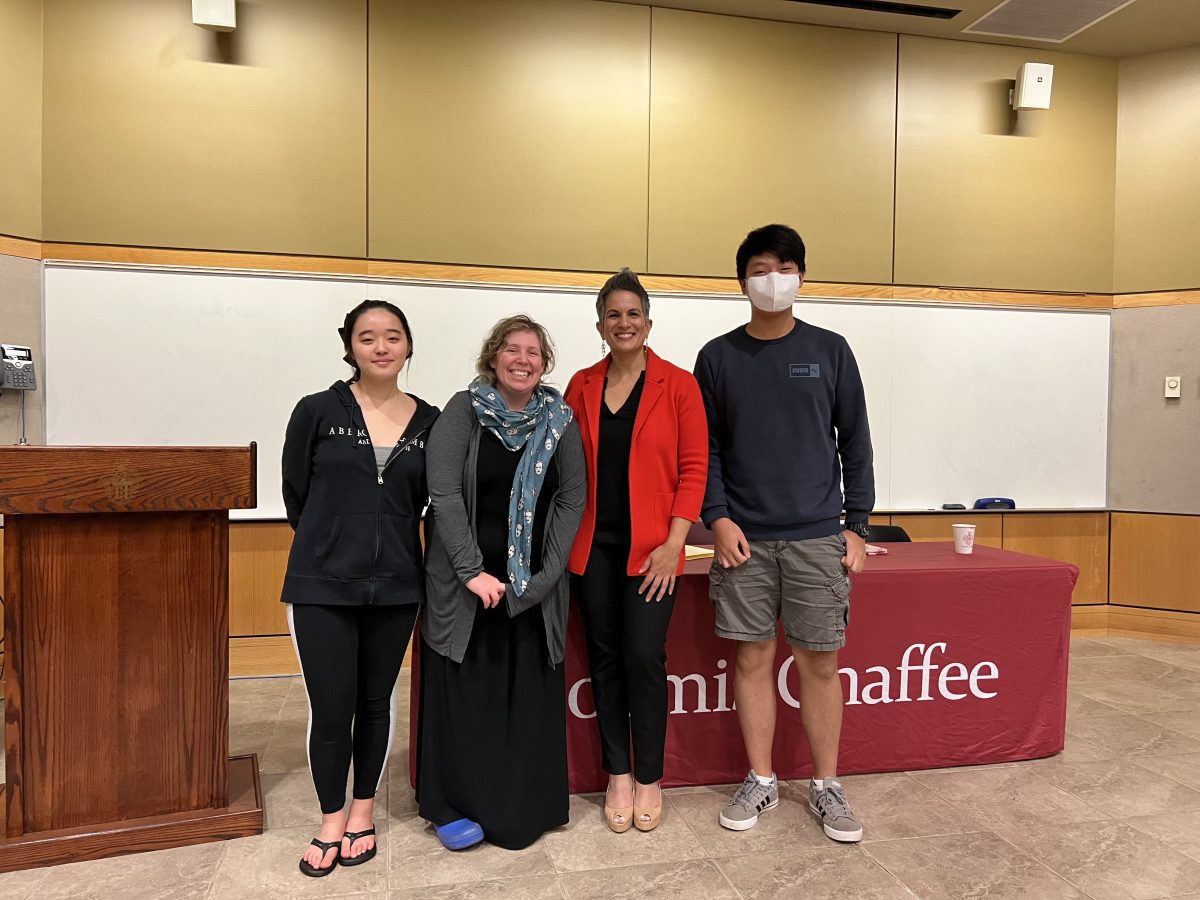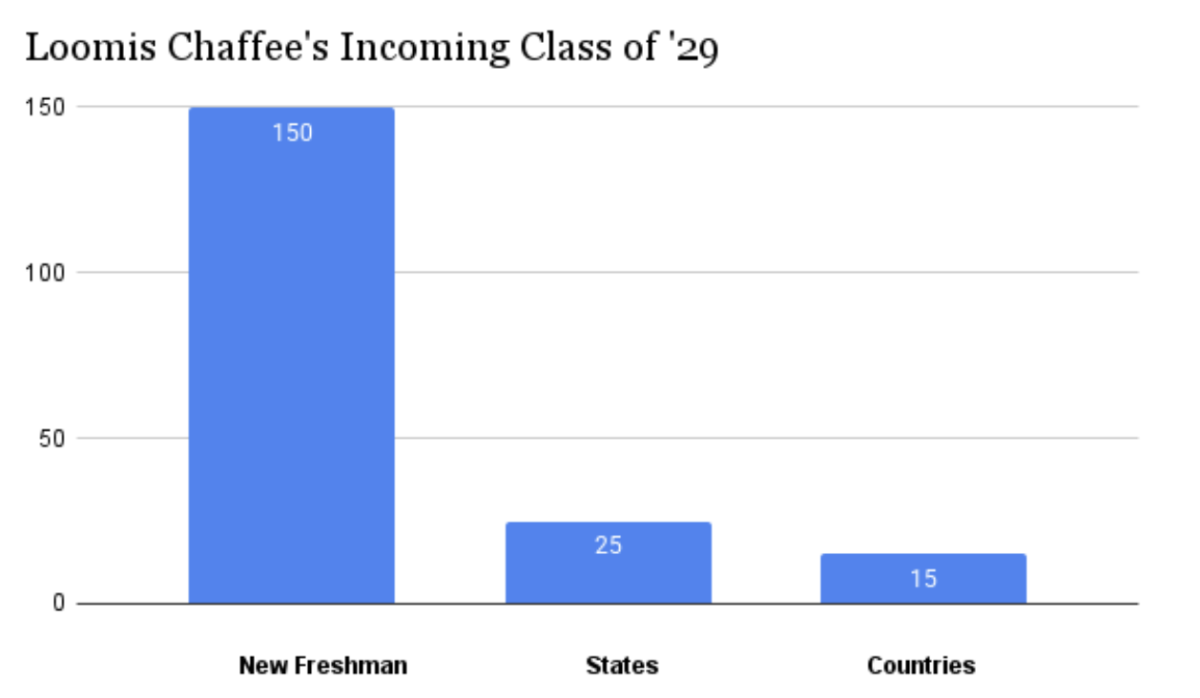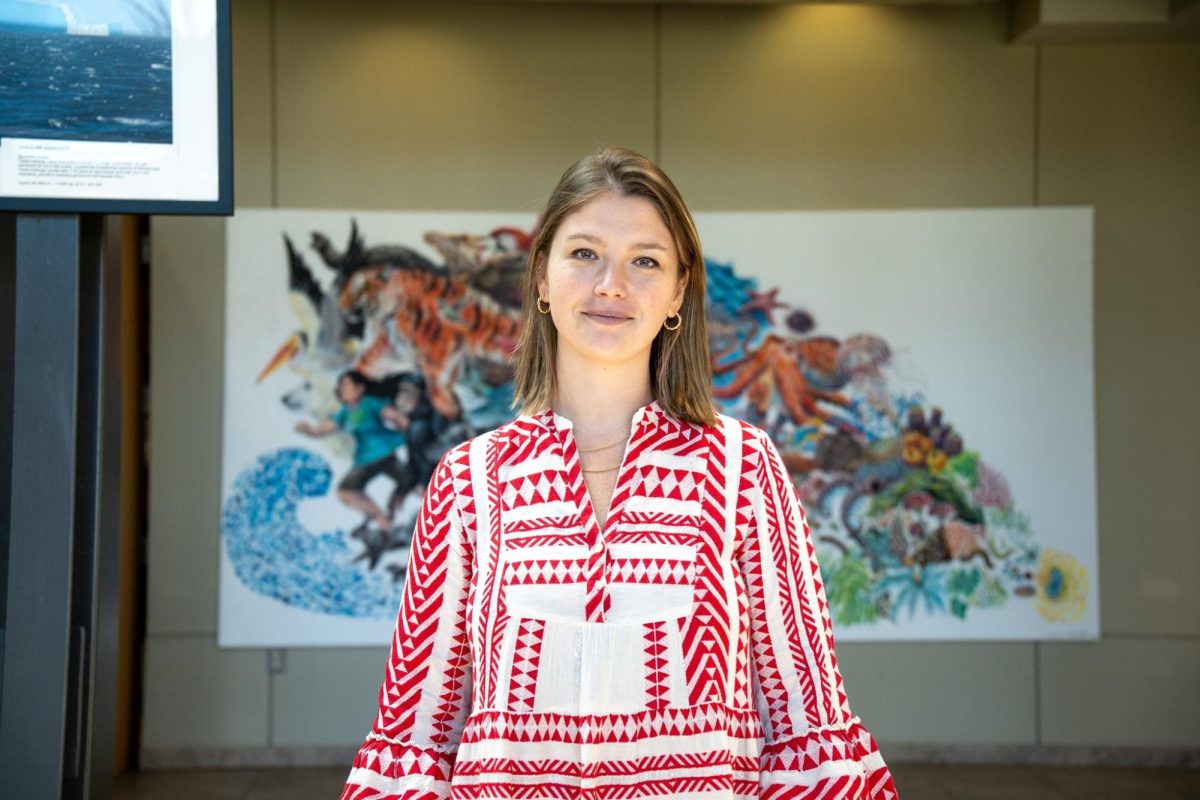Isabella Wang ’24
Editor-in-Chief
Systems of Writing: A Method to the Madness
On October 19 this year, Loomis Chaffee welcomed alumnae Maya Shanbhag Lang ’96, author of the memoir What We Carry and current president of the Author’s Guild (and very importantly, past Loom co-editor-in-chief and Log staff writer), and Eugenie Montague ’97, author of Swallow the Ghosts, to be published in 2024, back onto the Island.
Thanks to the Ralph M. Shulansky ’45 Lecture Fund and the Norton Family Center for the Common Good, Loomis Chaffee Writing Initiatives hosted two events—a Dinner and Draft and a Conversation on Writing.
“This event was [Ms. Parsons’s] concept … [she] sees this as an effort to connect current student writers with the broader community of Loomis Chaffee writers,” Dr. John Morrell, Director of Writing Initiatives, said.
The night commenced with the Dinner and Draft, a small dinner party with just over a dozen diners, starring Dr. Lang and Ms. Montague as very valued members of the round table.
The evening started out with light conversation over food, before shifting to dessert and the awaited discussion between the two acclaimed authors and longtime friends.
Writers in attendance, both students and faculty, listened attentively as Dr. Lang and Ms. Montague answered questions and discussed their writing processes and journeys.
The two friends met during Loomis, as prefect and prefectee, and since then, both their friendship and their love for writing has held true.
“We were best friends in boarding school; we’d stay up all night talking [about] books…talking [about] the universe!” Ms. Montague reminisced.
The authors referenced the two main types of writers: planners—those who carefully draft out their writing, and pantsers—those who “fly by the seat of [their] pants,” as Dr. Lang aptly described.
Writers often fall into one of the two categories, or somewhere in the vast space in between.
The two authors occupy both ends of the spectrum—Dr. Lang identified as a “pantser” and Ms. Montague saw herself as a “planner.”
“I feel like I’m reading as I’m writing and I keep going because I want to know [how the story ends],” Dr. Lang said, describing her pantser-like outlook.
Ms. Montague shared her slightly more planner-adjacent writing process.
“I think I get motivated by ideas,” she said. “I find I do this thing … [where] I think I know what comes next—like a lilypad where I can jump to the next one … I’ve heard people call it ‘persistent starting.’”
Nevertheless, Ms. Montague also noted how this metaphor for her writing thought process doesn’t always hold true.
“[My direction] changes sometimes: if you think you know where you are going [and aren’t open to a new angle], sometimes it’s like forcing characters onto an exit ramp away from where they want to go.”
Dr. Lang equates writing to the concept of math asymptotes.
“You know how [a function approaches an asymptote] but [they] never touch? That is an approximation of how writing feels like,” she said. “Writing is so hard. It just doesn’t get easier.”
“Because you’ve written one book it doesn’t teach you how to write the other,” Ms. Montague added.
The authors also discussed how writers should, or shouldn’t tell, their own and other’s stories.
“I never want [my writing] to stray into speaking for anyone else,” Dr. Lang said. “I’m not trying to tell the story… [I] tell my experience which only I can say.”
The dinner ended, perhaps, really where it all began: with a discussion on how the two authors initiated and maintained their writing pursuits.
“Writing is like building a house,” Dr. Lang said. “I build the house … I demolish it and build it again … each time I promise to do better and I fail again.”
“I have a fear of the white page,” Ms. Montague added.
And yet, for her, as well as many other authors, that same white page has a gravitational pull that has lasted since she was a child.
“[Eventually], I started to read books as a writer. I tried to study [them] like how [one might study how] a magician does their tricks. Then I tried to copy them,” she said. “I read a lot, wrote a lot, and never stopped.”







